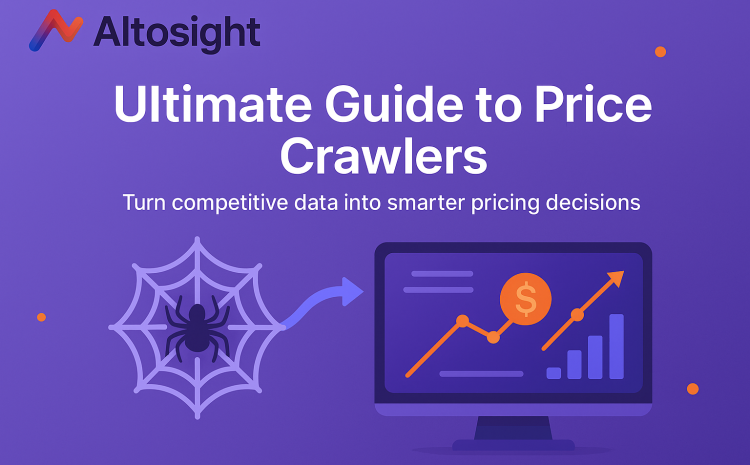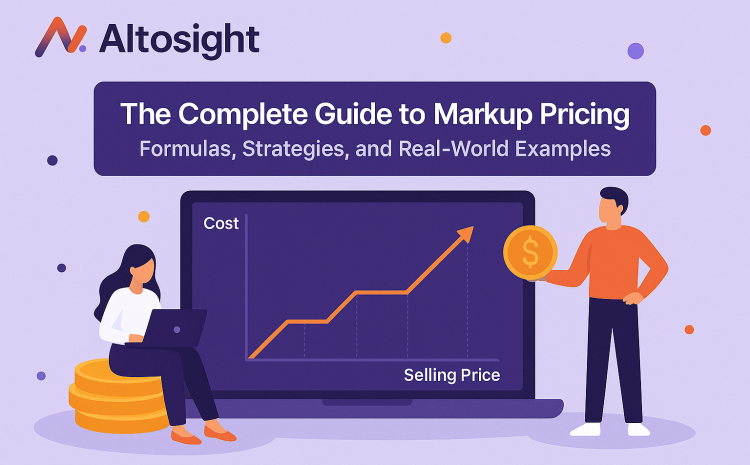
Ever wondered how some companies always nail their pricing strategy?
Perfect pricing isn’t just luck—it’s a growth engine. While many brands lean solely on competitive analysis or industry benchmarks, there’s a more holistic approach: equilibrium pricing.
This strategy finds that sweet spot where customer demand perfectly aligns with your supply, ensuring every pricing decision drives real results.
Finding equilibrium as an eCommerce brand, wholesaler, or retail manager differentiates between profitable growth and missed opportunities.
Many companies set prices based on gut feelings or competitor research alone, missing crucial market signals that could guide them toward optimal pricing decisions.
Smart pricing is one of modern commerce’s most powerful yet underutilized tools.
When companies identify their true equilibrium price, they can maintain healthy inventory levels, capture appropriate market share and generate sustainable profits.
Mastering equilibrium pricing starts with understanding its core principles and how to implement them. Success stories also help us see exactly how these strategies work for businesses in the real world.
What is Equilibrium Price?
In simple terms, equilibrium price is the optimal point where the available inventory meets customer demand exactly. For online sellers, this means products fly off the shelves at just the right rate — no overstock, no stockouts.
Finding Market Balance
At the equilibrium price, your business sidesteps two major pitfalls:
- Overpricing: Products sit unsold, leading to markdowns that reduce profits.
- Underpricing: Products sell too quickly, resulting in stockouts and lost customers.
When you discover your true equilibrium price, products move steadily through your store without artificial pushes or promotional rescues.
Sales maintain a natural rhythm as customers return, knowing they’ll find fair prices that match each product’s perceived value.
Understanding Quantity and Flow
The interplay between equilibrium price and quantity is vital to your market’s health.
Achieving equilibrium means you’re selling just the right amount at prices that please both your bottom line and your customers. Even small price tweaks can keep this balance as seasons change and competition evolves.
By mastering these fundamentals, you build a data-driven strategy that adapts to dynamic market conditions.
The Equilibrium Price Formula
For online sellers, equilibrium is reached when the quantity demanded equals the quantity supplied (Qd = Qs).
Mastering this formula helps you optimize inventory and boost profits.
How to Calculate Equilibrium Price
You might currently set prices based on instinct or by following the Minimum Advertised Price (MAP).
However, uncovering your true equilibrium price does more than just guide your pricing—it creates a predictable inventory flow and secures steady profits.
By taking a closer look at your sales patterns, the competitive landscape and overall market conditions, you can pinpoint the sweet spot where supply meets demand.
Unlike relying solely on gut feelings or merely matching competitor prices, a systematic approach to finding your equilibrium price translates into better inventory management, more consistent sales and healthier profit margins.
The key is to collect the right data and follow a proven process that adapts seamlessly across different product categories and fluctuating market conditions.
Here’s a clear step-by-step breakdown of the process:
Step 1: Understand Your Demand Function
- Objective: Map out how your customers respond to different prices.
- Actions:
- Dive into your sales data to determine the number of units sold at each price point.
- Analyze seasonal trends and identify periods when demand shifts.
- Outcome: Gain insights into customer price sensitivity.
Step 2: Calculate Your Supply Function
- Objective: Evaluate your supply capabilities across various price levels.
- Actions:
- Consider factors such as warehouse space, supplier delivery speeds, and minimum order requirements.
- Factor in all costs that influence how many units you can profitably stock.
- Outcome: Establish a realistic supply function.
Step 3: Find the Intersection Point
- Objective: Identify the equilibrium price where supply meets demand.
- Actions:
- Compare your demand and supply data side by side.
- Look for the price point where your available supply perfectly matches customer demand.
- Outcome: Achieve the “sweet spot” to avoid both excess inventory and stockouts.
Step 4: Monitor and Adjust
- Objective: Maintain optimal sales through ongoing evaluation.
- Actions:
- Track inventory levels and monitor competitor pricing.
- Observe shifts in customer behavior and adjust your pricing strategy accordingly.
- Outcome: Keep your equilibrium price aligned with market dynamics for sustained sales performance.
Example: Let’s look at how a sneaker store might implement these principles:
At $120:
- Demand: 1,000 customers want to buy the sneakers.
- Supply: The store can stock 700 pairs.
- Outcome: Demand exceeds supply, leading to stockouts.
At $150:
- Demand: 700 customers want the sneakers.
- Supply: The store can stock 700 pairs.
- Outcome: Demand and supply are perfectly aligned, maximizing efficiency.
At $180:
- Demand: Only 400 customers want the sneakers.
- Supply: The store can still supply 700 pairs.
- Outcome: Sales decline while excess inventory accumulates.
Finding the $150 equilibrium price creates optimal market conditions — where customer demand aligns with available supply, maximizing both sales and inventory efficiency.
Real-World Example: How Apple Uses Equilibrium Pricing
Apple is a master at applying equilibrium pricing to balance market demand, supply, and brand value. Here’s how they do it:
- Premium Launch Pricing
When launching a new iPhone, Apple sets premium prices—typically between $999 and $1,499. This high initial price not only captures intense early demand from loyal customers and tech enthusiasts but also reinforces the product’s premium image.
Importantly, Apple intentionally limits supply at launch, ensuring that demand and supply remain balanced right from the start. - Strategic Adjustments with Market Shifts
As market conditions evolve, Apple adjusts its pricing strategy subtly. For example:
- Key Shopping Events (e.g., Black Friday): Instead of deep discounts, Apple offers strategic incentives such as bundled accessories or gift cards. This approach protects their premium price point while still enticing buyers.
- Seasonal Promotions: During back-to-school periods, targeted educational discounts and promotions help drive sales without eroding brand value. Similarly, carefully calculated bundle offers during the holiday season respond to shifting demand curves.
- Key Shopping Events (e.g., Black Friday): Instead of deep discounts, Apple offers strategic incentives such as bundled accessories or gift cards. This approach protects their premium price point while still enticing buyers.
- Competitive Considerations
Despite stiff competition from brands like Samsung and Google, Apple’s market research consistently shows that customers are willing to pay a premium for its products. This is thanks to:
- Strategic product differentiation
- Strong brand positioning
These factors allow Apple to maintain higher price points even in the face of more affordable alternatives.
- Strategic product differentiation
- Natural Price Adjustments Over Time
As market saturation sets in, older iPhone models gradually see price reductions when new versions launch.
These adjustments create new equilibrium points that cater to price-sensitive customers while still ensuring overall profitability across the product line.
Apple’s approach is a blend of high initial pricing, subtle yet effective adjustments and responsive strategies to market trends.
This balanced method ensures that every product, whether a flagship model or an older version, finds its optimal equilibrium in the market—maintaining both demand and brand prestige.
Factors Affecting Equilibrium Price
Market equilibrium price comes from a complex web of forces that successful sellers and brands need to navigate.
Understanding these dynamics helps companies find and maintain optimal pricing in ever-changing markets. If you can master these elements, you’ll gain significant advantages over your competition.
| Key Factor | Market Impact | Required Action |
| Consumer Trends | Sudden demand shifts Changed buying patterns Seasonal variations | Monitor social signals Track viral products Adjust for seasonality |
| Supply Chain | Increased shipping costs Material shortages Production delays | Built-in cost buffers Maintain flexible pricing Plan inventory timing |
| Competition | Price matching pressure Market share shifts New market entrants | Track competitor moves Track sales velocity Assess market position |
| Regulations | MAP pricing requirements Regional tax variations Trade restrictions | Ensure compliance Account for geography Update legal requirements |
| Technology | Real-time price tracking Automated adjustments Market analysis | Implement monitoring Use pricing tools Act on data insights |
Consumer Impact on Pricing
- Customer Behavior Drives Equilibrium:
Your customers’ actions define what equilibrium pricing looks like in practice. - Influencing Factors:
Social media trends (e.g., a product going viral on TikTok), economic pressures, and changing preferences all contribute to a dynamic market landscape. - Adapting to Shifts:
Rapid demand spikes and inflationary pressures force you to balance pricing strategies with evolving customer expectations.
Supply Chain and Market Forces
- Direct Effects on Pricing:
Fluctuations in the supply chain—like rising shipping costs, material shortages and manufacturing delays—directly influence your equilibrium price. - Staying Agile:
Flexibility in your supply management allows you to navigate these challenges without sacrificing your competitive edge. - Managing Costs:
By anticipating supply chain issues, you can adjust pricing strategies to maintain profitability despite external pressures.
Market Competition
- Competitive Balance:
Equilibrium pricing reflects a delicate interplay among competitive forces. - Real-Time Monitoring:
Modern tracking tools help you keep tabs on competitor price movements across various marketplaces. - Avoiding Price Wars:
In eCommerce, where customers can compare prices instantly, a single price drop may trigger a chain reaction, squeezing margins for everyone. - Leveraging AI Insights:
Platforms like Altosight provide deeper insights into competitor behavior, enabling you to make profitable adjustments and spot trends before they impact your business.
Regulations and Compliance
- Government-Imposed Boundaries:
Pricing laws, tariffs, and regional requirements set critical limits that you must consider. - Multi-Region Considerations:
If you operate across different areas, compliance with varying regulations becomes an integral part of your equilibrium calculations. - Balancing Act:
The goal is to ensure your pricing strategy adheres to legal requirements while remaining competitive in the market.
Technology and Price Optimization
- Transforming Theory into Practice:
Modern technological tools convert equilibrium pricing theory into actionable strategy. - Continuous Analysis:
Advanced algorithms analyze your sales data in real time, recommending adjustments based on actual performance. - Automated Monitoring:
Automation keeps your pricing consistent across channels and reveals new market opportunities, ensuring you remain agile in a competitive landscape.
How to Use Equilibrium Pricing in Your Business Strategy
Understanding the market equilibrium definition helps you develop pricing strategies that balance profit with demand. Different types of equilibrium appear across market conditions, and recognizing these patterns guides better decisions.
Finding Your Sweet Spot
Your sales history demonstrates real equilibrium price examples.
When analyzing data, look for periods where sales flow steadily without excess inventory or stockouts – these represent natural equilibrium points. Watch how equilibrium quantity shifts through seasons and promotions, revealing customer price sensitivity and market dynamics.
Making Strategic Adjustments
Knowing what is out of balance when a market is in a state of disequilibrium shapes your response strategy. During demand spikes, gradual price increases maintain stability while capturing additional value.
For slowing sales, test targeted promotions before considering permanent reductions. Product bundles and limited-time offers help gauge price sensitivity without long-term commitments.
Modern pricing tools make understanding how to find equilibrium price easier. They monitor market changes automatically and suggest timely adjustments based on actual performance data, helping maintain competitiveness while protecting profits.
Avoiding Common Pitfalls
High prices often lead to inventory buildup and eventual markdowns, while underpricing creates stockouts that frustrate customers. Both scenarios demonstrate market equilibrium economics in action—prices naturally gravitate toward sustainable levels that balance supply and demand.
Watch competitor movements closely as market shifts signal changes need to be made. Many sellers miss important transitions until sales decline. Regular monitoring helps spot and address changes before they impact your bottom line.
Success comes from consistent analysis and thoughtful adjustments that keep your pricing aligned with market conditions. Regular reviews ensure you maintain an optimal market position while protecting profitability.
The Role of AI & Automation in Pricing Optimization
Modern technology is reshaping how sellers determine equilibrium pricing and maintain a strong market position.
AI-powered platforms like Altosight translate complex economic data into actionable insights, allowing you to base pricing decisions on real-world performance rather than theory alone.
Real-Time Market Intelligence
AI tools continuously monitor various market signals—from competitor movements to regional trends—providing up-to-date data across all marketplaces where you operate.
When market conditions change, these systems quickly flag the shifts, enabling you to adjust your pricing strategy based on concrete information.
Smart Analytics and Decision Support
Beyond merely collecting data, modern AI systems analyze your sales history and market patterns to identify emerging trends.
This deeper analysis helps you pinpoint when your pricing is at equilibrium—where supply meets demand—allowing you to fine-tune your approach before changes in customer behavior affect your business.
Practical Implementation
While major companies like Amazon adjust millions of prices in real time, specialized AI platforms make similar capabilities accessible to businesses of all sizes.
By automating routine pricing adjustments, these tools free you from constant manual oversight, ensuring that your pricing remains competitive even in fast-changing markets.
Strategic Considerations
Successful implementation requires balancing automated adjustments with strategic oversight. Establish clear rules to safeguard your profit margins while allowing AI to manage day-to-day pricing updates.Regular reviews ensure that your pricing strategy remains aligned with your broader business objectives as market dynamics evolve.
Key Takeaways & Actionable Steps for eRetailers & Brands
Finding the right price means balancing what your customers want with what your business needs. When you understand how to find equilibrium price for your products, you can maintain healthy sales without sacrificing profits.
Market conditions change constantly—new competitors enter, seasons shift, and customer preferences evolve. Different types of equilibrium surface throughout the year, requiring flexible strategies. Your success depends on spotting these changes early and adjusting smoothly to maintain your market position.
Technology makes staying competitive easier than ever. Modern tools help track market changes and suggest price adjustments but can’t replace good business sense. The most successful sellers combine market data with deep customer understanding, creating pricing strategies that work in the real world.
What matters most? Knowing your market, understanding your customers, and having systems in place to adapt quickly when conditions change. When you spot what is out of balance when a market is in a state of disequilibrium, you can respond effectively before it impacts your bottom line.
✓ Market Analysis Foundation
□ Collect 6-12 months of sales history across seasons
□ Document competitor pricing on all major channels
□ Record customer feedback and buying patterns
□ Map inventory turnover rates by product
□ Note seasonal trends and market shifts
✓ Price Strategy Development
□ Define your minimum profit margins
□ Set upper and lower price boundaries
□ Plan responses to demand changes
□ Create promotional guidelines
□ Build a seasonal pricing calendar
✓ Active Market Monitoring
□ Watch competitor price movements
□ Compare stock levels to sales speed
□ Study customer buying behavior
□ Measure promotion results
□ Track market share changes
✓ Technology Integration
□ Choose reliable monitoring tools
□ Set up automated price alerts
□ Create dynamic pricing rules
□ Build performance dashboards
□ Schedule regular reporting
Companies that master equilibrium pricing treat these steps as interconnected parts of a living strategy. Regular reviews ensure pricing aligns with broader business goals while maintaining healthy margins.
Market conditions constantly evolve, but brands making decisions based on solid data and customer insights consistently maintain their competitive edge through strategic pricing positioning.





